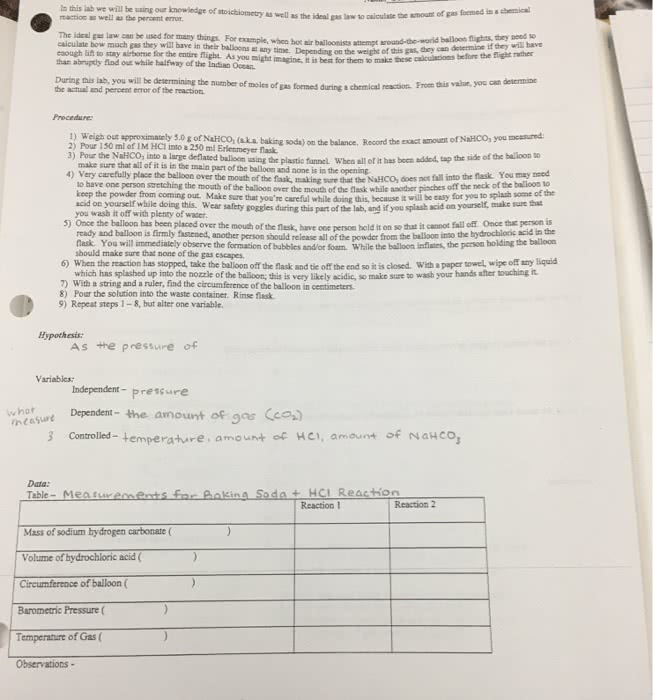CHEM 120 Lecture Notes - Lecture 3: Hot Air Balloon, Ideal Gas Law, Ideal Gas

3
CHEM 120: Applications of the Ideal Gas Equation
Molar Mass of a Gas:
- You can rewrite the ideal gas law in terms of (m) mass of gas present and molecular
weight (M) rather than # of moles
o n = m/M
o PV= mRT/M → M = mRT/PV → m = MPV/RT
Gas Density: dependence on T & P
- d = m/V = MP/RT
o ONLY DEPENDS LINEARLY ON THE MOLECULAR WEIGHT AND THE SAME T & P
CONDITIONS
o Double the P, double the density
o Double the T, half the density
Fun Fact: ***Pressure of the gas outside of a hot air balloon is approx. ~ the same as the
pressure inside the balloon*** (due to the hole on the top of the balloon)
Archimedes; a body fully immersed in a fluid is buoyed upwards by a force equal to the weight
of the displaced fluid (e.g. hot air balloons work this way)
o Fbuoyant = mair g
o E.g. The hot air will move upward when the net upward force (buoyant) will be
greater than the mass of the air inside the balloon
▪ By calculating you can do Fd = mball g
▪ F = = (0.311)(9.8) = 0.003 N/L
The atmospheric fluid is much larger than the density of H2 (e.g. zeppelin) making the buoyant
force large
4.4 - Gases in Chemical Reactions:
- Gases react in volumes proportional to small whole numbers (Gay-Lussas’ La 88
o Volumes are proportional to coefficients in chemical equations
o V Aogadro’s La
- Volume units; at constant P&T 0.68 L of O2 reacting with 1.36 H2 will produce 1.36 L H2O
(double the amount of H2 than O)
SLIDE FOR TNT QUESTIONS
Dalto’s La of Partial Pressures:
The total pressure exerted by a gaseous mixture is equal to the sum of the partial pressures of
each individual component in a gas mixture
find more resources at oneclass.com
find more resources at oneclass.com

26
CHEM 120 Full Course Notes
Verified Note
26 documents
Document Summary
Chem 120: applications of the ideal gas equation. You can rewrite the ideal gas law in terms of (m) mass of gas present and molecular weight (m) rather than # of moles: n = m/m, pv= mrt/m m = mrt/pv m = mpv/rt. D = m/v = mp/rt: only depends linearly on the molecular weight and the same t & p. Conditions: double the p, double the density, double the t, half the density. Fun fact: ***pressure of the gas outside of a hot air balloon is approx. ~ the same as the pressure inside the balloon*** (due to the hole on the top of the balloon) Archimedes; a body fully immersed in a fluid is buoyed upwards by a force equal to the weight of the displaced fluid (e. g. hot air balloons work this way: fbuoyant = mair g, e. g. The atmospheric fluid is much larger than the density of h2 (e. g. zeppelin) making the buoyant force large.


